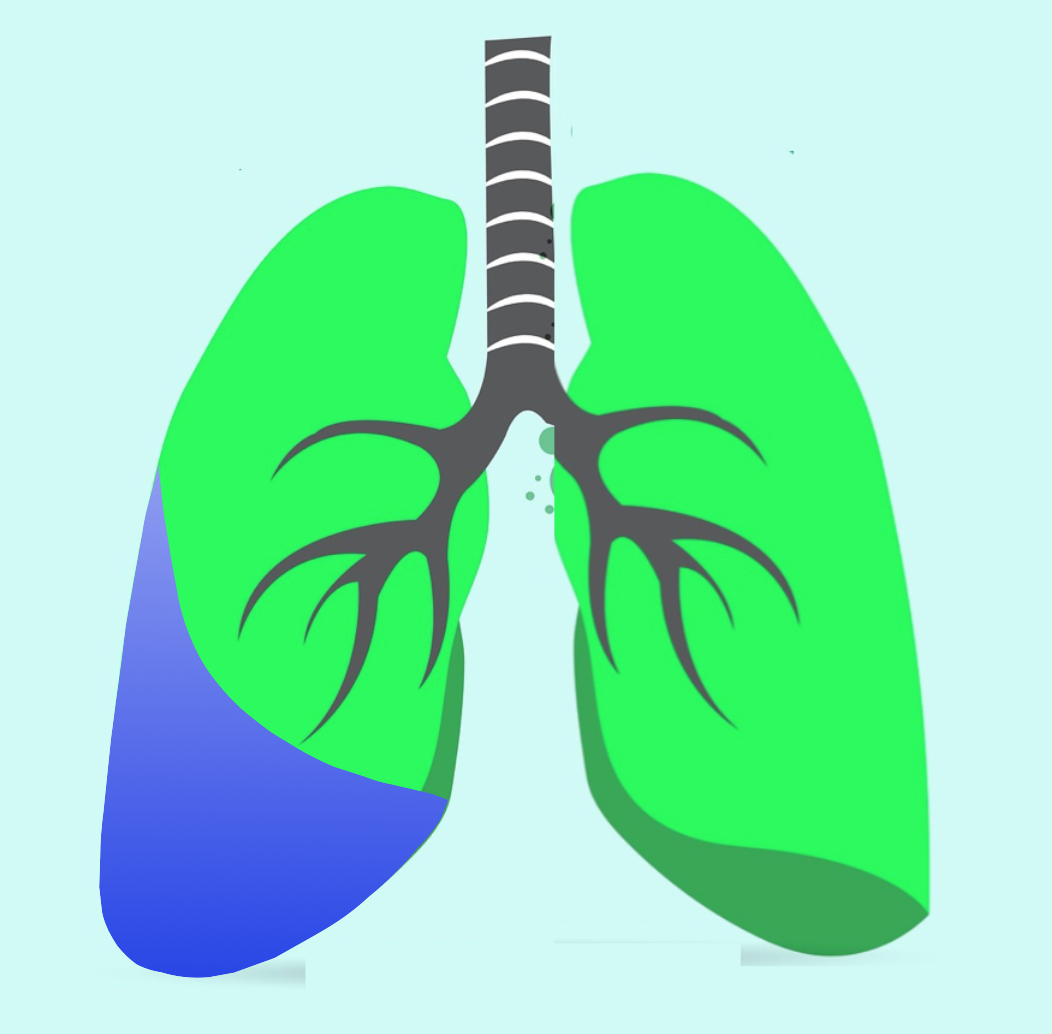PLEURAL EFFUSION (COLLECTION OF FLUID BETWEEN THE LUNG MEMBRANES)
24/09/2021

Image: Pixabay
What is pleural effusion?
Pleural effusion (PE) is the collection of fluid between the lung membranes (pleurae). There are two membranes that surround the lungs. The membrane just outside the lung is called the visceral pleura, and the membrane just below the rib cage is called the parietal pleura. The part between the two pleura is called the pleural space. There is very little fluid in the pleural cavity, which is considered physiological. This fluid reduces friction between the pleural surfaces while breathing. The fluid in the pleural cavity has a dynamic property. On the one hand, there is fluid passage into the pleural space, and on the other hand, fluid is reabsorbed from the pleural space. Both fluid secretion and fluid absorption occur primarily in the parietal pleura.
How does a pleural effusion occur?
Fluid collects in the pleural space after a problem occurs in the balance (release or absorption or both) of the fluid in the pleural space. The main causes of fluid formation in the pleural space are;
1- Diseases of the pleura itself
2- Pressure changes between the fluid in the pleural space and the blood in the pleural vessels
3- Impairment of lymphatic drainage
As examples of PE developing due to pleural diseases; PE that develops due to tuberculosis (tuberculous pleurisy), fluid that occurs after cancer metastasis to the pleura (malignant PE), PE accompanying pneumonia (parapneumonic PE) can be given. profdromerdeniz.com
As examples of PE formed after pressure changes; PE seen in congestive heart failure (CHF) and PE seen in hypoalbuminemia (low albumin in the blood) can be given.
As an example of PE developing due to impaired lymphatic drainage; PE caused by lymphomas involving the mediastinum (the anatomical region between the right and left lung) can be given. In addition, in the diseases of the pleura itself (for example, in tuberculous pleurisy), the obstruction of the lymphatic stomata (pore) in the pleura also contributes to the formation of PE. profdromerdeniz.com
What are the symptoms of pleural effusion?
The most common symptoms in patients with PE are chest pain, shortness of breath and cough. Pain occurs on the side with PE. This pain is usually a stabbing pain that feels like a knife stabbing while breathing. This pain is called pleuritic chest pain. The pain is evident when the fluid is formed or when the fluid is decreasing, with the increase of the fluid the pain decreases. In cases of excess pleural fluid, shortness of breath may occur. The cough that accompanies PE is usually mild or moderate, and may occur with (deep) breathing. profdromerdeniz.com
Furthermore, in addition to the above symptoms, there may be symptoms related to the cause of PE. For example; Parapneumonic PEs may cause fever, malaise, fatigue and general condition deterioration. Fever, malaise, night sweats, and weight loss may occur in tuberculous pleurisy. Shortness of breath, shortness of breath in supine position (orthopnea), foamy sputum, palpitations and edema of the legs (pretibial edema) may occur in CHF. profdromerdeniz.com
How is pleural effusion detected?
A significant portion of PEs can be detected by chest X-ray. If the amount of fluid is low or the PE is sub-pulmonic (below the the lung), PE may not be detected on chest X-ray. In such cases, PE can be revealed by thorax CT or ultrasonography.
Is there a cure for pleural effusion?
The treatment of PE is closely related to the disease causing the PE. PE may occur due to many diseases, so the cause of PE must be determined in a patient with PE.
For example, treatment of tuberculous pleurisy is antituberculous drug therapy lasting at least 6 months. profdromerdeniz.com
How is the cause of pleural effusion investigated?
Generally, thoracentesis (removal of fluid from the pleural cavity) is performed under the guidance of ultrasonography. The fluid taken is examined biochemically. After biochemical examination of pleural fluid, in cases deemed necessary, cytological or microbiological examination is performed. Also, in cases deemed necessary, biopsies are taken from the parietal pleura and histopathological examination is performed. profdromerdeniz.com
How is the treatment of pleural effusion?
In a patient with PE, once the cause of PE is determined, it is treated according to the underlying disease.
Patients with parapneumonic PEs, with a thoracentesis indication, the patient’s treatment is planned considering the results of pleural fluid taken by thoracentesis.
As mentioned above, tuberculous pleurisy is treated with antituberculous drug therapy lasting at least 6 months.
Some diseases that cause PE may not have a cure. For example, PE that occurs after cancer metastasis to the pleura (malignant PE) usually occurs in advanced cancer cases. The treatment of such cases is usually palliative; aimed at reducing the symptoms of the disease, especially shortness of breath, and increasing the quality of life. In cases deemed necessary, with a process called pleurodesis, pleural membranes are attached to prevent fluid collection.
Should thoracentesis be performed in every patient with pleural effusion?
Thoracentesis is not recommended (initially) for the patients with PE developing due to some diseases. For example, PE occurring in patients with CHF is usually attributed to CHF. In general, it is not recommended to investigate the cause of PE in patients with CHF. With an appropriate CHF treatment, PE can be eliminated in a significant proportion of these patients. However, in PE due to CHF, if the amount of pleural fluid is high, the patient’s pleural fluid can be reduced by thoracentesis, since it may increase the patient’s shortness of breath. On the other hand, if PE does not regress or PE increases despite appropriate CHF treatment, the cause of PE should be investigated. profdromerdeniz.com

